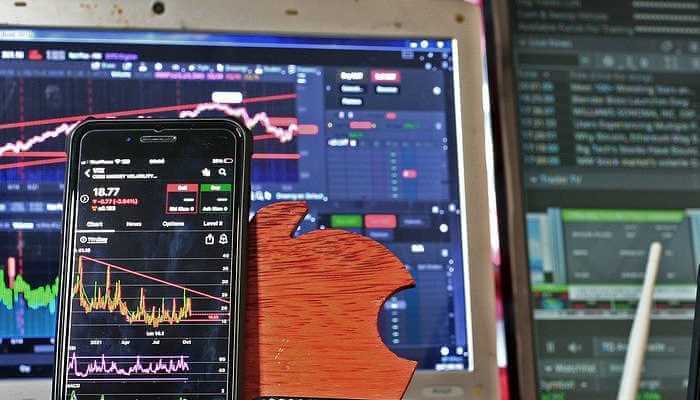What Is The Metaverse? Your Guide to the Future of the Internet
Neal Stephenson first wrote about the metaverse in the novel Snow Crash in 1992. He probably didn’t predict that Facebook CEO Mark Zuckerberg would bet his whole company on it.
But here we are!
Everyone seems to be talking about the metaverse these days. NFTs, virtual worlds, platform continuity — what does it all mean? If we don’t get a handle on this soon, we might miss out on the next era of connection.
But that’s why you found this guide: in the next seven minutes, you’ll learn everything you need to know about the metaverse. Let’s go!
What Is The Metaverse?
Defining the metaverse is a tricky thing to do. After all, it doesn’t quite exist — yet. One way of thinking about the metaverse is as a new medium for the Internet.
We used to consume content online through our desktops. Then, mobile devices let us bring the internet with us wherever we went. In the metaverse, we finally blur the lines between the digital and physical worlds.
Here’s how Facebook (now Meta) puts it:
“…A set of virtual spaces where you can create and explore with other people who aren’t in the same physical space as you.”
Matthew Ball, noted venture capitalist, calls the metaverse:
“…a network of persistent, real-time rendered 3D worlds and simulations that support continuity of identity, objects, history, payments, and entitlements”.
Both of these definitions touch on two critical points about the metaverse:
- It involves a community of users, like modern-day social media.
- Your identity stays consistent between virtual worlds and the real world.
So, what is the metaverse? It’s an idea for the future of the Internet. One where we interact with each other in virtual spaces that feel just like real life.
The Technology Behind the Metaverse
The metaverse isn’t just one platform. Dozens of different apps and technologies make it possible. Some of the most important are:
- Virtual reality
- Augmented reality
- Cryptocurrency
Let’s take a closer look at each one.
Virtual Reality
A pillar of the metaverse is building 3D words that feel realistic to the user. There’s no better way to achieve this than through virtual reality (VR). Multi-person shared VR is crucial for building a convincing virtual world. After all, the shared virtual world isn’t a new concept: Second Life has been doing it for nearly 20 years.
Facebook’s Oculus acquisition was an early bet on the metaverse. As VR headsets get more affordable and widespread, digital worlds get even more accessible.
Augmented Reality
Augmented reality (AR) is a critical part of combining the digital world with the real world. After all, it’s what makes the metaverse unique. The closest we’ve gotten to everyday AR is through Snapchat and Instagram filters. We expect these experiences to become more realistic and useful in the metaverse. For example, a virtual dressing room for an online clothing store.
Companies like Niantic are trying to lay the foundation for even more AR experiences. Even Meta has teamed up with Ray-Bans to create augmented reality glasses.
Cryptocurrency
We often discuss NFTs and crypto in the same conversations as the metaverse. Why is that? The metaverse promises continuity between the real and digital world. One of the best ways to do this is via blockchain and cryptocurrency.
For an online space to be a truly virtual world, it needs to handle payments and identity. Even harder, those things need to be consistent across worlds. You can verify digital transactions and ownerships on the blockchain with crypto. The result? A truly digital economy.
Why Does The Metaverse Matter?
- True digital ownership. Video games are some of the most popular outlets for the metaverse right now. Imagine buying a collectible in one game and then using it in a completely different game. In the metaverse, your digital identity is as valid as your real-life one. That means your purchases are your own, and you can use them wherever you want.
- Deeper connections. One of the biggest hopes for the metaverse is breaking down Internet barriers. Social media doesn’t just have to be images and text anymore. Instead, it can feel like true social interaction with people online.
- New experiences. The metaverse promises digital experiences as we’ve never seen them before. Think about augmented reality concerts, virtual offices, and non-competitive gaming. All are examples of what the metaverse can bring.
Metaverse Tomorrow, Cryptocurrency Today
The metaverse is promising. Companies like Facebook, Epic Games, and Niantic are betting big on it right now. For individual investors, there isn’t too much we can do to invest in the virtual worlds of tomorrow. But we can take advantage of the technology behind the metaverse going forward: cryptocurrency.
The crypto markets are an excellent way to:
- Help build the future of the Internet.
- Make passive income.
At the same time.
Want to learn crypto trading yourself? The Plan by Dan Hollings is a grid trading strategy that turns crypto volatility into money in the bank. Get more infor HERE
Frequently Asked Questions
Who is creating the metaverse?
Many creators, individuals and companies alike, are building the metaverse. Big companies like Epic Games and Facebook are helming the effort, followed by smaller builders in the NFT and crypto space. Video game platforms like Roblox and Minecraft are early metaverse-like spaces.
How does the metaverse work?
Many technologies go into creating the metaverse, including VR, AR, and cryptocurrency. These tools combine to form convincing digital worlds that incorporate into our own. You can shop, consume media, and connect with other people in shared virtual spaces within the metaverse.
What is Mark Zuckerberg’s metaverse?
Meta (formerly Facebook) CEO Mark Zuckerberg said the metaverse would be the company’s focus moving forward. Zuck’s vision for the future of digital worlds includes new social settings for people to connect online. Sure, platforms like Second Life have been around for years. But Zuckerberg’s vision looks more like something out of a science fiction novel.







